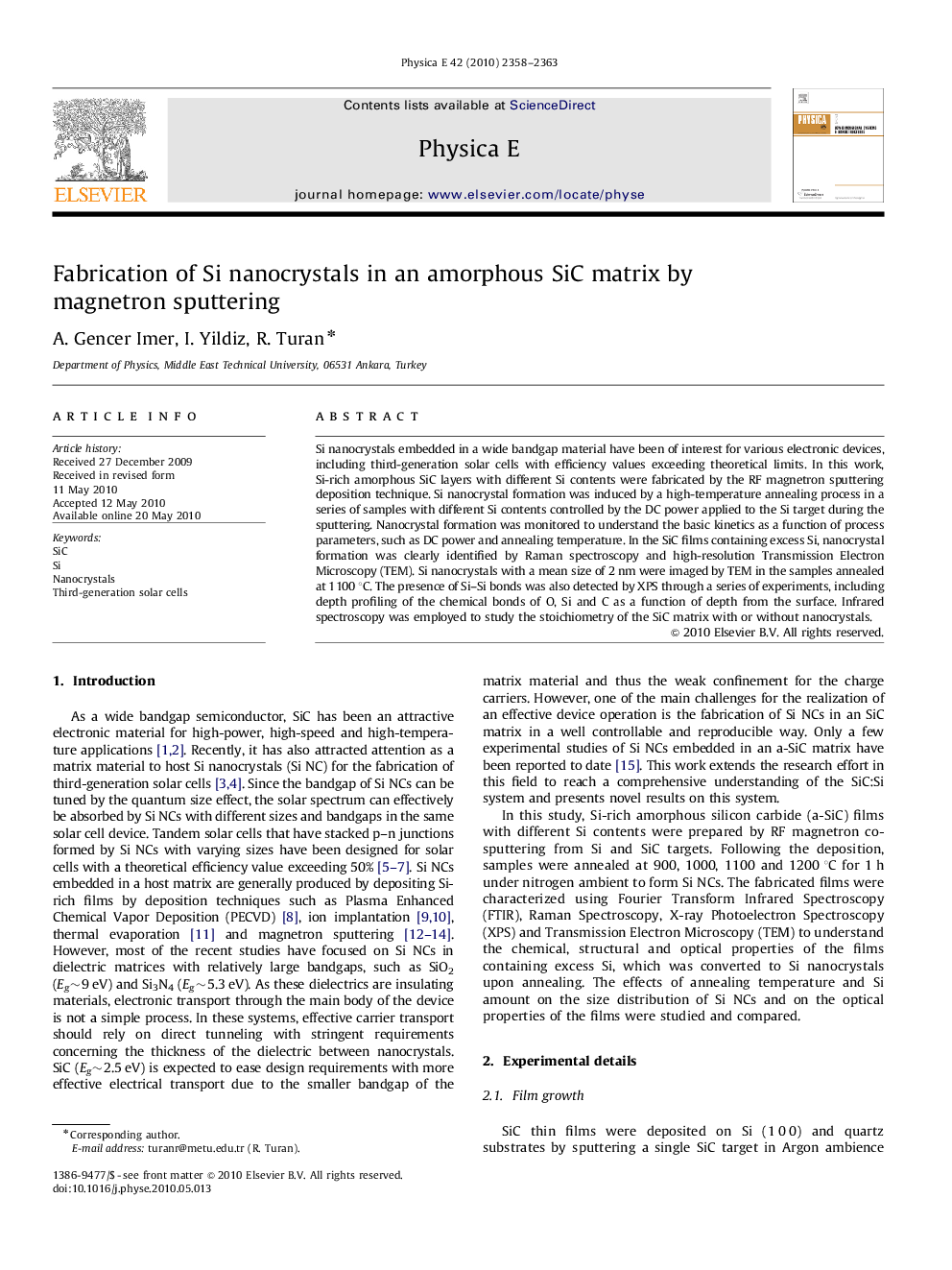| Article ID | Journal | Published Year | Pages | File Type |
|---|---|---|---|---|
| 1545643 | Physica E: Low-dimensional Systems and Nanostructures | 2010 | 6 Pages |
Abstract
Si nanocrystals embedded in a wide bandgap material have been of interest for various electronic devices, including third-generation solar cells with efficiency values exceeding theoretical limits. In this work, Si-rich amorphous SiC layers with different Si contents were fabricated by the RF magnetron sputtering deposition technique. Si nanocrystal formation was induced by a high-temperature annealing process in a series of samples with different Si contents controlled by the DC power applied to the Si target during the sputtering. Nanocrystal formation was monitored to understand the basic kinetics as a function of process parameters, such as DC power and annealing temperature. In the SiC films containing excess Si, nanocrystal formation was clearly identified by Raman spectroscopy and high-resolution Transmission Electron Microscopy (TEM). Si nanocrystals with a mean size of 2 nm were imaged by TEM in the samples annealed at 1100 °C. The presence of Si-Si bonds was also detected by XPS through a series of experiments, including depth profiling of the chemical bonds of O, Si and C as a function of depth from the surface. Infrared spectroscopy was employed to study the stoichiometry of the SiC matrix with or without nanocrystals.
Keywords
Related Topics
Physical Sciences and Engineering
Materials Science
Electronic, Optical and Magnetic Materials
Authors
A. Gencer Imer, I. Yildiz, R. Turan,
